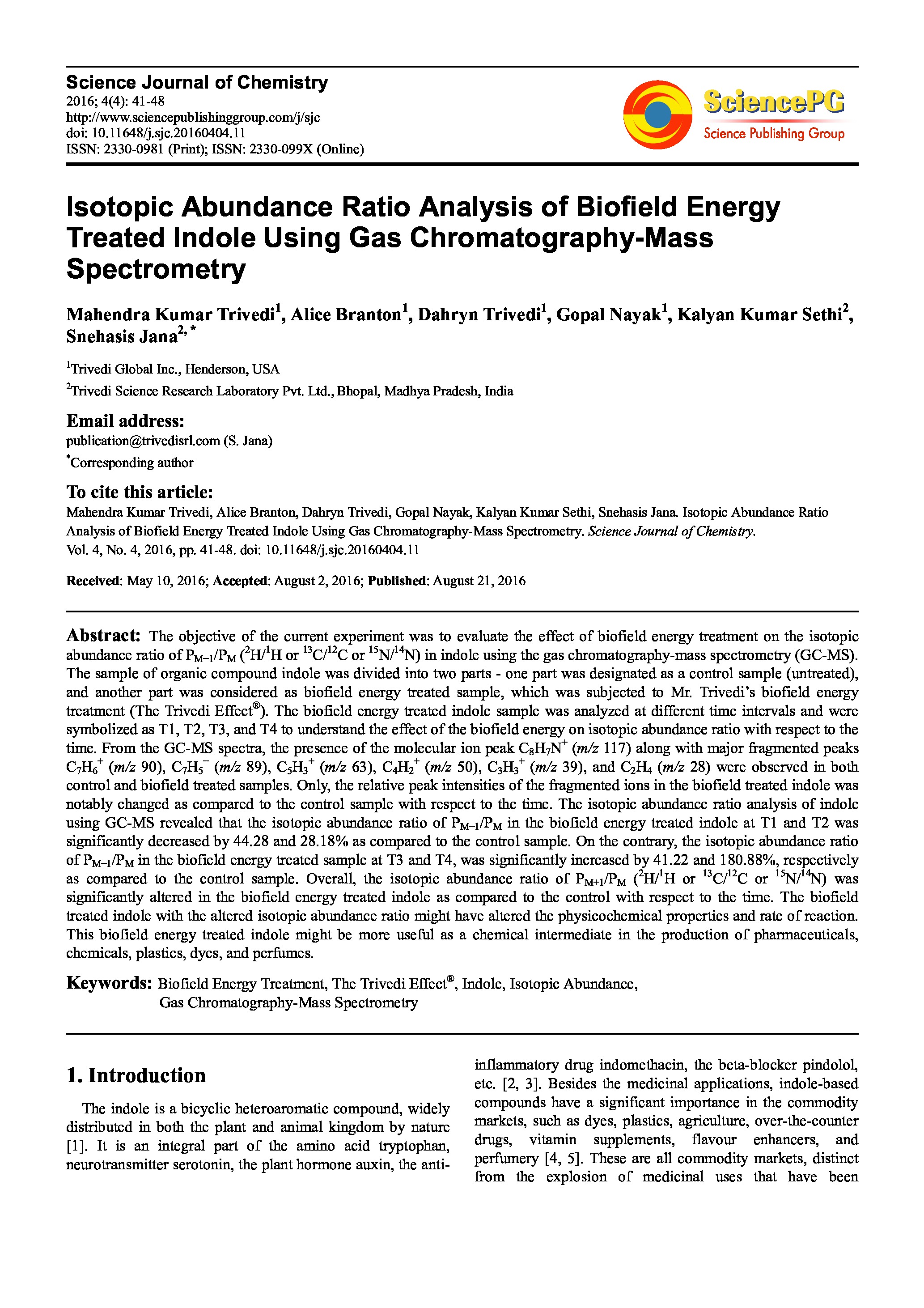Isotopic Abundance Ratio Analysis of Biofield Energy Treated Indole Using Gas Chromatography-Mass Spectrometry
Affiliation
Trivedi Global Inc.; Trivedi Science Research Laboratory Pvt. Ltd.
Main category
Natural Sciences (Analytical Chemistry, Method Development (Chemistr)
Abstract
The objective of the current experiment was to evaluate the effect of biofield energy treatment on the isotopic abundance ratio of PM+1/PM (2H/1H or 13C/12C or 15N/14N) in indole using the gas chromatography-mass spectrometry (GC-MS). The sample of organic compound indole was divided into two parts - one part was designated as a control sample (untreated), and another part was considered as biofield energy treated sample, which was subjected to Mr. Trivedi’s biofield energy treatment (The Trivedi Effect®). The biofield energy treated indole sample was analyzed at different time intervals and were symbolized as T1, T2, T3, and T4 to understand the effect of the biofield energy on isotopic abundance ratio with respect to the time. From the GC-MS spectra, the presence of the molecular ion peak C8H7N+ (m/z 117) along with major fragmented peaks C7H6+ (m/z 90), C7H5+ (m/z 89), C5H3+ (m/z 63), C4H2+ (m/z 50), C3H3+ (m/z 39), and C2H4 (m/z 28) were observed in both control and biofield treated samples. Only, the relative peak intensities of the fragmented ions in the biofield treated indole was notably changed as compared to the control sample with respect to the time. The isotopic abundance ratio analysis of indole using GC-MS revealed that the isotopic abundance ratio of PM+1/PM in the biofield energy treated indole at T1 and T2 was significantly decreased by 44.28 and 28.18% as compared to the control sample. On the contrary, the isotopic abundance ratio of PM+1/PM in the biofield energy treated sample at T3 and T4, was significantly increased by 41.22 and 180.88%, respectively as compared to the control sample. Overall, the isotopic abundance ratio of PM+1/PM (2H/1H or 13C/12C or 15N/14N) was significantly altered in the biofield energy treated indole as compared to the control with respect to the time. The biofield treated indole with the altered isotopic abundance ratio might have altered the physicochemical properties and rate of reaction. This biofield energy treated indole might be more useful as a chemical intermediate in the production of pharmaceuticals, chemicals, plastics, dyes, and perfumes.
DOI
10.18147/smn.2017/paper:501
Do you have problems viewing the pdf-file? Download paper
here
If the paper contains inappropriate content, please
report the paper. You will be redirected to the landing page.
